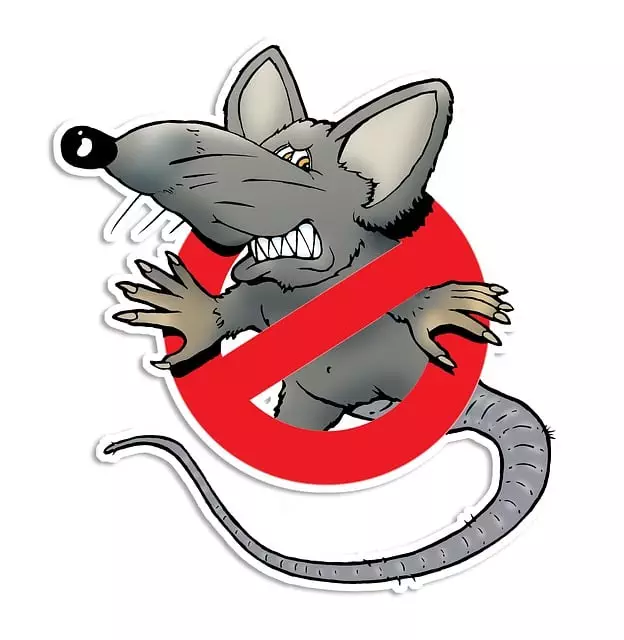Understanding rodent behavior is key to effective rodent control. By observing their patterns and preferences, you can strategically place bait stations, seal entry points, and remove habitats to discourage their presence. Safe and humane methods, like live traps and natural repellents, protect both animals and humans. Sealing common entry points, regular maintenance, and professional help for severe infestations are crucial. Natural, sustainable methods avoid toxic chemicals. Dynamic strategies tailored to urban or rural settings ensure effective rodent control. Prioritizing health and safety during removal, deep cleaning, and maintaining exclusion techniques prevent reinfestation.
“Ensuring a rodent-free environment requires a comprehensive approach to safe rodent removal. This article guides you through every step, from understanding complex rodent behavior to implementing effective trapping techniques. We explore eco-friendly solutions and offer insights on DIY vs professional control.
Learn about identifying entry points, preventing recurrences, and safely managing infestations in diverse settings. Additionally, discover critical health and safety measures during removal and post-removal care for a restored space. Master these strategies for successful and humane rodent control.”
Understanding Rodent Behavior: Key to Effective Removal

Understanding rodent behavior is a critical aspect of effective rodent control. Rodents, such as mice and rats, are intelligent creatures with strong survival instincts. They are attracted to food sources, shelter, and warmth, and will quickly learn to avoid traps or other removal methods if they perceive them as threats. Observing their patterns, habits, and preferences is key to successfully luring them out of your space.
Knowing when and where rodents are most active can help you identify potential entry points and attractants. By understanding their behavior, you can strategically place bait stations, seal gaps, and remove potential habitats, creating an environment that discourages their presence. This proactive approach to rodent control, based on a solid knowledge of their behavior, is essential for long-term prevention and effective removal.
Safe and Humane Trapping Techniques

When dealing with rodent control, it’s crucial to employ safe and humane trapping techniques that ensure both the well-being of the animals and your family or pets. Live traps are an effective and compassionate option, allowing captured rodents to be released back into the wild or handled by professionals. These traps humanely stun or capture rodents without causing them harm, promoting ethical rodent control.
Using proper baiting techniques and placing traps in strategic locations can significantly improve success rates while minimizing stress on the animals. Additionally, checking traps frequently and handling captured rodents with care prevents unnecessary suffering. This thoughtful approach to rodent control not only respects wildlife but also reduces the risk of disease transmission, making it a responsible and effective solution for any home or property owner facing a rodent infestation.
Identifying Common Entry Points and Prevention Strategies

Identifying common entry points is a crucial step in effective rodent control. Rodents are adept at finding small gaps, cracks, and openings around your home or property. Common access points often include utility pipes, doors, windows, vents, and any other potential openings. By inspecting your surroundings for these entries, you can proactively seal off areas using caulk, steel wool, or mesh screens to prevent rodents from re-entering. Regular maintenance and inspection are key to keeping your space rodent-free.
Prevention strategies play a significant role in long-term rodent control. Maintaining a clean environment by regularly cleaning up food debris and storing items securely can deter rodents. Additionally, trimming trees and shrubs away from windows and doors, securing garbage cans with tight-fitting lids, and sealing any visible gaps around utility connections can significantly reduce the risk of rodent infestation. Implementing these measures acts as a robust first line of defense against rodents, promoting a safer and more secure living environment.
Professional vs DIY Rodent Control: When to Seek Expert Help

When dealing with rodent infestations, there are two primary approaches: professional rodent control services or DIY methods. While some people might opt for do-it-yourself (DIY) solutions, such as setting traps or using repellents, seeking expert help is often the best course of action, especially for severe cases or if prevention is a priority.
Professional rodent control offers several advantages. Experts have in-depth knowledge and access to specialized equipment and treatments that are effective and safe. They can identify and seal entry points, locate nests, and provide long-term solutions to keep rodents at bay. This method ensures minimal disruption to your environment and reduces health risks associated with exposure to chemicals or disease-carrying pests. Additionally, professionals tailor their services to specific needs, making it a more comprehensive and efficient option for rodent management.
Eco-Friendly Solutions for Rodent Management

In today’s world, where environmental consciousness is on the rise, it’s crucial to approach rodent control with eco-friendly solutions that minimize harm to both pests and the planet. Instead of relying heavily on toxic chemicals, there are numerous natural and sustainable methods for effective rodent management. One such approach involves utilizing essential oils known for their powerful yet safe repellents properties. Oils like peppermint, eucalyptus, and cinnamon can deter rodents through their strong scents, promoting a chemical-free environment that’s safer for both occupants and wildlife.
Another eco-friendly strategy is implementing physical barriers and habitat modification techniques. This includes sealing entry points with durable materials like steel wool or metal mesh, ensuring food sources are securely stored, and removing potential hiding spots around the property. By combining these non-toxic methods, homeowners can achieve effective rodent control while preserving the balance of local ecosystems and contributing to a greener environment.
Dealing with Rodent Infestations in Different Environments

Rodent infestations can vary greatly depending on the environment, requiring tailored approaches for effective rodent control. In urban settings, where buildings and structures provide ample shelter, traditional methods like trap placement and baiting are commonly used. Professional pest control services often employ a combination of techniques, including inspection, sealing entry points, and targeted treatments to ensure humane and efficient removal.
In contrast, rural areas with open fields and agricultural lands may face unique challenges, such as wild rodents seeking shelter during harsh weather conditions. Here, strategies might include habitat modification, trap lines along property edges, and the use of natural repellents. It’s crucial to maintain a clean environment, remove potential food sources, and regularly inspect for signs of infestation to implement effective rodent control measures.
Health and Safety Measures During Rodent Removal

When addressing rodent removal, health and safety should be the top priorities for several reasons. These measures are critical to prevent the transmission of diseases from rodents to humans, as well as to safeguard against potential hazards posed by their presence. Before, during, and after the removal process, professionals must wear protective gear including gloves, masks, and suits to minimize direct contact with rodent droppings, urine, and nests, which can carry harmful pathogens.
Moreover, proper ventilation is essential in areas where rodents have been present to reduce the risk of inhaling toxic fumes or gases they may emit. Effective rodent control involves setting traps or using exclusion methods that are safe for both humans and pets. Ensuring a clean environment post-removal is equally important, involving thorough cleaning and disinfection to eliminate any remaining signs of rodent activity and prevent reinfestation.
Post-Removal Care: Restoring Your Space and Preventing Recurrence

After successful rodent removal, restoring your space and preventing future infestations is crucial for maintaining a clean and healthy environment. The first step involves thoroughly cleaning the affected areas with non-toxic, pet-safe cleaners to eliminate any remaining odors or traces of the rodents. This process ensures that your home or business is not only free from pests but also creates an unappealing environment for future intruders.
To enhance rodent control, consider sealing entry points and gaps where rodents might find their way in. Regular inspections and maintenance are key; check for any signs of new infestations, such as droppings or gnaw marks, and address them promptly. By combining thorough cleaning, exclusion techniques, and routine monitoring, you can effectively manage your space and keep rodents at bay, maintaining a peaceful and pest-free environment.
